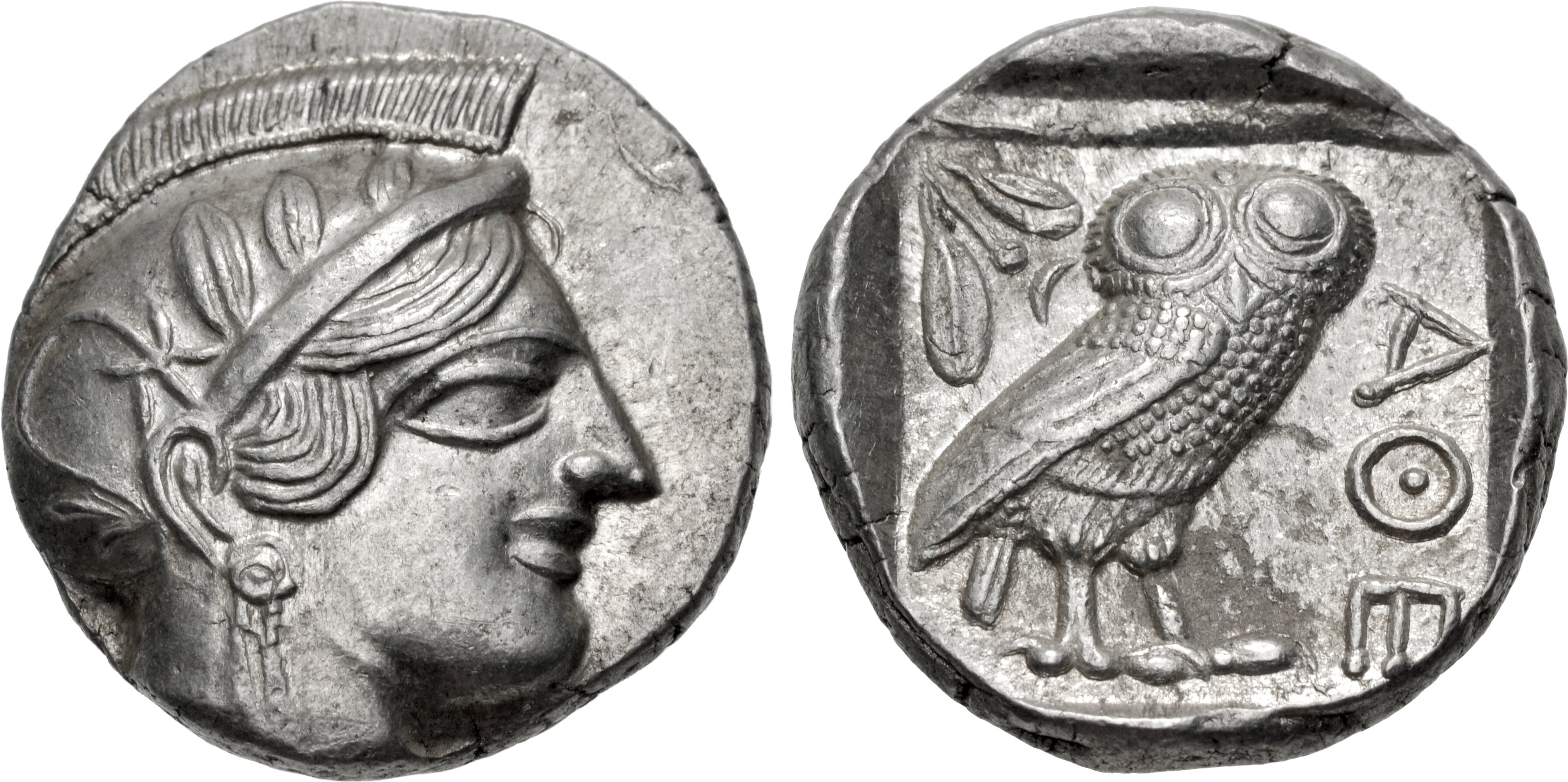449 BCE - 425 BCE | L'Z'B'L (in Aramaic)
Overstriking coin
Citium_over_Athens_CNG,_EA516,_18_May_2022,_298.jpg
[1]
Overstruck variety
Athens under Citium.jpg
[2]
|
|
Sale(s)Sale(s) ᵖ:
|
CNG, EA 516, 18 May 2022, 298
|
|
|
|
Description
| ObverseInscription or printing placed on the obverse.:
|
Herakles, wearing lion skin, in fighting stance right, holding club and bow
|
ReverseInscription or printing placed on the reverse.:
|
L'Z'B'L (in Aramaic) (Aramaic) Lion attacking stag crouching right within incuse square.
|
Mint and issuing power
Chronology
| FromIdentifies the initial date in a range assigned in a numismatic context. 449 BCE toIdentifies the final date in a range assigned in a numismatic context.. 425 BCE
|
Classical 480-323 BC  periodTime period of the numismatic object. periodTime period of the numismatic object.
|
Physical description
MetalThe physical material (usually metal) from which an object is made.: Silver 
|
WeightWeight of the numismatic object (in grams). in grams: 10.9810.98 g <br />10,980 mg <br />
|
DenominationTerm indicating the value of a numismatic object. Examples: tetradrachm, chalkous, denarius.: double siglos 
|
AxisDescribes the directional relationship between the obverse and reverse of a numismatic object.: 11 mm <br />0.1 cm <br />
|
| DiameterDescribes diameter of an object (in mm).: 20.520.5 mm <br />2.05 cm <br />
|
StandardStandard.: Persian
|
References
Description
| ObverseInscription or printing placed on the obverse.:
|
Helmeted head of Athena right, with frontal eye
|
ReverseInscription or printing placed on the reverse.:
|
AΘE (Greek) Owl standing right, head facing, closed tail feathers, olive spray and crescent to left, all within incuse square
|
Mint and issuing power
| MintIdentifies the place of manufacture or issue of a numismatic object. ᵖ:
|
Athens
|
Ancient regionAncient region. ᵖ
|
Attica
|
Modern countryModern country: Greece
|
AuthorityIdentifies the authority in whose name (explicitly or implicitly) a numismatic object was issued. ᵖ:
|
|
Chronology
| FromIdentifies the initial date in a range assigned in a numismatic context. 454 BCE toIdentifies the final date in a range assigned in a numismatic context.. 404 BCE
|
Classical 480-323 BC  periodTime period of the numismatic object. periodTime period of the numismatic object.
|
Physical description
| DenominationTerm indicating the value of a numismatic object. Examples: tetradrachm, chalkous, denarius. ᵖ:
|
tetradrachm 
|
StandardStandard. ᵖ:
|
Attic
|
References
References
- ^ Wroth, Warwick William (1886), A Catalogue of the Greek coins in the British Museum. vol. X : Crete and the Aegean Islands, London, The Trustees, p. 152, pl. XXIX
- ^ Tziambazis, Elias (2002), A catalogue of the coins of Cyprus: from 560 B.C. to 1571 A.D., Larnaca, 89 p.
- ^ Zapiti, Eleni - Michaelidou, Lefki (2008), Coins of Cyprus : from the collection of the Bank of Cyprus Cultural Foundation, Nicosia, Bank of Cyprus Cultural Foundation, 329 p.
- ^ Hoover, Oliver D. (2014), Handbook of Greek Coinage Series 4. Northern and Central Greece : Achaia Phthiotis, Ainis, Magnesia, Malis, Oita, Perrhaibia, Thessaly, Akarnania, Aitolia, Lokris, Phokis, Boiotia, Euboia, Attica, Megaris and Corinthia, sixth to first centuries BC, Lancaster, lxxi, 563 p.

